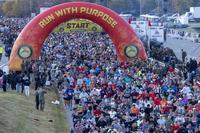Stuck in a rut with your fitness training? It’s common to grow weary of the same old routine focusing on the same goals week after week.
If you struggle to improve in physical strength, endurance and fitness testing events, consider adding something new and giving yourself a rest from activities that have grown stale.
But first, you should assess yourself and see if you even need a change.
An Honest Assessment: Learn Your Strengths and Weaknesses
Changing your workout routine can be intimidating, but it is necessary if you want to progress.
The first step is an honest assessment to determine your strengths and weaknesses.
A typical assessment we use for Navy special ops tactical athlete candidates is the following chart, though not all will apply to your goals:

Take the first step and gain valuable insight in assessing yourself by watching the Video Discussion About Assessment Tools.
Many veterans still enjoy striving to maintain these standard military fitness tests, even if older exercisers can’t match the performance of a 20-year-old. The challenges can still be fun to work toward and add to training cycles.
As you can see on the charts above, strength, power, speed, agility, endurance and muscle stamina are all tested. Keeping up with mobility and flexibility is also a requirement many neglect while younger, but veterans soon realize they cannot ignore joint mobility and muscle flexibility as they age. Do not skip mobility days in your training. This addition can be the one change you need to see improvement in recovery and overall performance.
Add Exercises That Require More Strength and/or Endurance
You may need to add exercises that require more strength, such as weightlifting; or more endurance, such as running or swimming.
You should also include a variety of exercises that challenge different parts of your body. For example, if you are weak in upper body strength, you should include exercises that target your arms, back and chest. And of course, don’t skip leg day.
As with anything new, especially running, progress logically. You do not want to go too far in the wrong direction, as this can lead to injury (see more tips to avoid injury).
Instead, focus on small, incremental improvements. Get on a running program that progresses 10-15% each week. If you used to regularly run 20 to 30 miles but that was several months or years ago, don’t start there.
Finally, if you are training for a specific event, such as a military fitness test, you may need to adjust your workout accordingly. Consider getting a plan that focuses specifically on your goals. Even though it may be a generic program, you can make the adjustments needed each day to fit your abilities and goals. This is much easier than creating a new program on your own from scratch. Be patient and trust the process.
Stew Smith is a former Navy SEAL and fitness author certified as a Strength and Conditioning Specialist (CSCS) with the National Strength and Conditioning Association. Visit his Fitness eBook store if you’re looking to start a workout program to create a healthy lifestyle. Send your fitness questions to stew@stewsmith.com.
Want to Learn More About Military Life?
Whether you're thinking of joining the military, looking for fitness and basic training tips, or keeping up with military life and benefits, Military.com has you covered. Subscribe to Military.com to have military news, updates and resources delivered directly to your inbox.


















